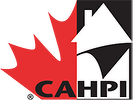
Canadian Association of Home and Property Inspectors
The Canadian Association of Home & Property Inspectors (CAHPI) is a national non-profit association, whose mission is to promote and develop the home inspection profession.
Click to Learn More About the Canadian Association of Home and Property Inspectors
Visit www.cahpi.ca and Join Now!